Aves
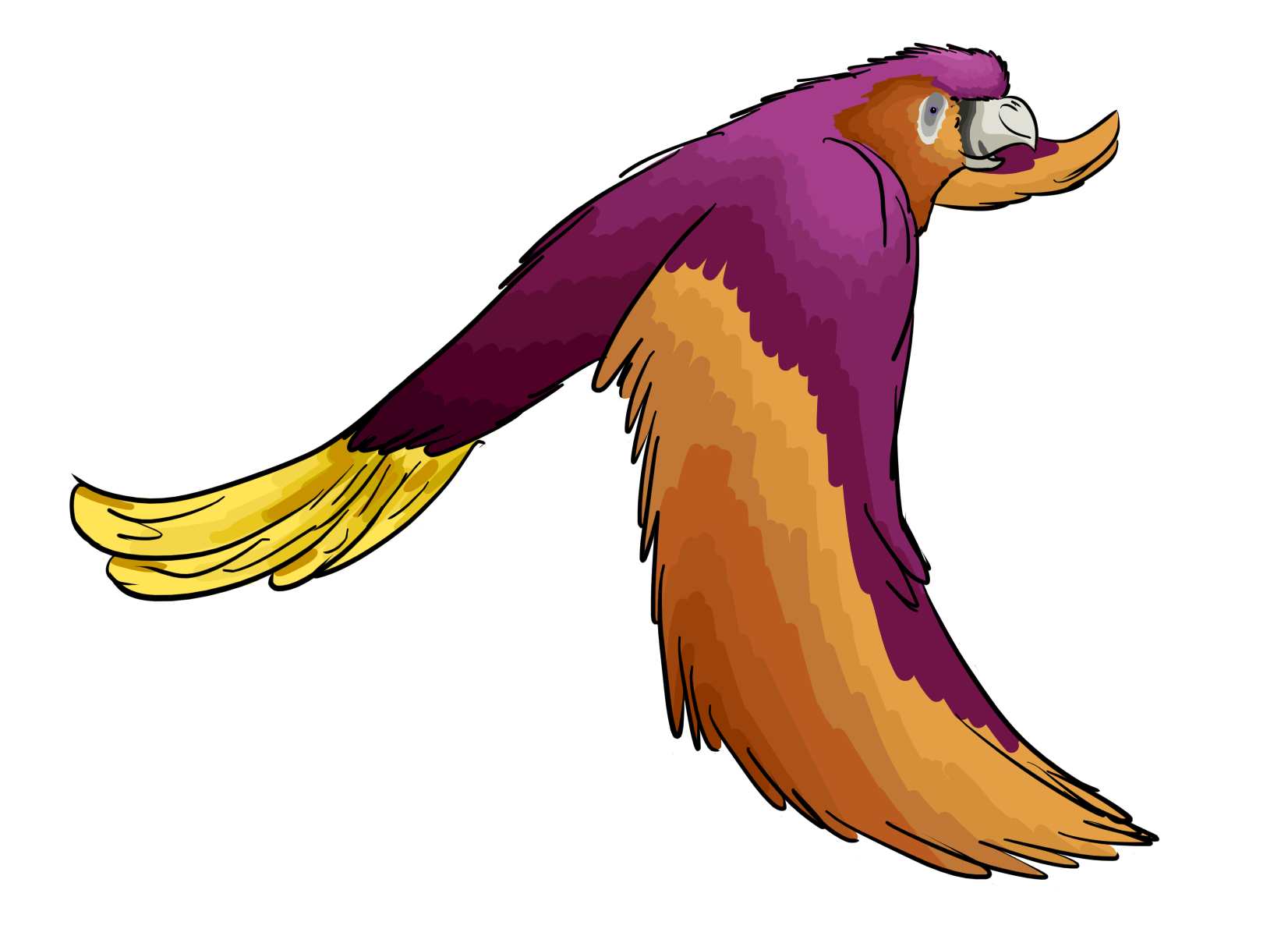
Dominating the lands, skies, and seas, of so many planets are birds. This massive class of animals are one of the most diverse in the Yonderverse. Birds are characterised by their feathers and beak, hard-shelled eggs, hollow and lightweight skeletons, their high metabolic rate, and a four-chambered heart.
We house over two trillion bird species in the A to Zoo, with over a thousand sectors housing avids. They are some of the easiest to train and we use many for our interactive animal displays. Not all birds have the ability to fly, but it is what sets them apart from other animal classes. Almost every single bird species have the capability of powered flight. Birds aren't typically very large - most range from ten centimetres in length to three metres in height.
Birds are famous for their ability to adapt and survive in a variety of climates, even the extremes. Emperor penguins are the only animals to breed on mainland Antarctica, a continent based around the South Pole of planet Earth. Rufous winterhawks cope with the rainforests of planet Zyphar, who's mist makes it impossible to see farther than a few inches. The classification "Aves" was founded by human scientists, who's classification system we copied and adapted for further species and planets. We will provide an example of one earth bird and two from other planets, as well as link to any avian articles.
Skeletal Systems
Birds have hollow bones, one of their defining traits. This is what allows them to fly so effortlessly. They are not entirely hollow - they are reinforced with criss-crossing pillars of bone that maintain structural integrity, but still keep bone density down. The hollow bones can also store air, and helps to circulate heat.
Birds? Birds are really cool. With their wings, you know. How they fly. Some fly upside down, like, what's up with that? I'll never know. Birds are really cool. How lucky I am.
Cultural Significance
Birds have played a highly significant role in cultures across the Yonderverse, for billions upon billions of years. The very first sophontic beings, deep within the Milky Way, were birds. Very primitive birds, mind you, but birds nonetheless. The kuaha'rua, as they called themselves, were a species of terror bird in the Phorusrhacidae family. Countless intelligent beings that currently exist in the Yonderverse are birds, including Sacaethean pirates, archangels, trogonites, saturnians, and petrates, among many others.
The kavaari were a significant space-faring species almost four billion years ago. Overpopulating their home planet and becoming so dependent on specific environmental factors to survive, they set out into space to find a new planet to live on. After exploring thousands of potential homes, they eventually succumbed to extinction, but not before leaving remnants of their travels on each planet they visited. Statues of their leaders have had profound impacts on civilisations that exist today, many worshipping the kavaari as deities.
While intelligent birds are all fascinating, other birds are just as intriguing. Many bird species are domesticated and used by people. Galliformes and Anseriformes are often hunted for food, extensively bred for different breeds and varieties which raises the eyebrows of environmental activists. Rocking up to a duck show with your new breed that has a moustache and a six-foot long tail may look cool, but usually they come with a plethora of illnesses caused by inbreeding, which is not so good.
Sadly, this is not limited to birds either.Falconiformes are often trained for leisure and for sport, as these birds are quick to learn and impressive hunters. Some Accipitriformes are trained too, but these are reserved for more experienced trainers due to their size. Some hawks and eagles can reach several metre wingspans after all.
Birds are a deep part of religion and worshipping culture. In many religions many deities are portrayed as birds. Many are seen to bring good luck, viewed as good omens. They are often seen in the opposite light as well. More often than not, certain groups of birds are seen to bring back luck which can even result in an endangered species or two. Folk who believe that certain birds bring bad luck purposefully hunt these birds. Gold-Crested Crows of Osao are believed to cause goldcap, a horrific disease that completely encases the body of a slime in gold. As a consequence of these beliefs, the birds are now endangered.
At the A to Zoo we strongly believe in, and encourage, education. Not only do we educate visitors, we go out into certain areas of the Yonderverse to teach people the reality of these birds. Unfortunately it does not help our case when some bird species have genuine ties to cursed magics.
Behaviour
Communication
Vocalisation
Nothing livens up a planet more than bird calls. While they may appear simplistically harmonious, bird calls are very complex. The length, pitch, and even context, can all allude to different meanings. Birds have mastered the art of vocalised communication. Vocalisations are used to signal for predators and threats, territory defending, attracting mates, or simply communicating with its colony.
Many birds are master mimics, such as lyrebirds. They have been recorded mimicking camera shutters, car alarms and sirens, chainsaws, and even people talking. Some birds such as Psittaciformes and certain Passeriformes can learn basic spoken phrases.
Mating Rituals
Many birds undergo passionate mating rituals to attract a mate. Leks are quite common in the bird world, where many males gather in one large area to display their best features, for females to watch and select whomever they find most impressive. Other birds go to great lengths to create the perfect dance to attract females. Birds of paradise are known to show off their splendid plumages to attract females.
Male birds typically have the brighter plumage over females, and are the ones who must show off to get a mate. Peafowl are a great example of this, with males carrying a brightly coloured train, while females display a drab brown plumage in comparison.
Nesting
Nesting is a very familiar habit for bird species. All birds have nests of some kinds, where eggs are laid. Some go to great lengths to design elaborate nests, such as weaverbirds who design nests with a fake hatch to trick predators. Others, such as auks, simply lay an egg on a flat rock on the side of a cliff - many eggs become scrambled at the cliff's bottom. They do try to use pebbles to stop the eggs from rolling off, but this doesn't always work.
Some birds will nest in burrows, such as puffins. Swifts and swallows often nest on the sides of houses, using a mixture of clays and muds, feathers, sticks, moss, and other items to create a solid nest protected from predators. Nesting is typically done by both partners as a bonding experience, but in some species only one half of the pair will build a nest, as a way of winning over the other. Nest building is an important part of bird life and bird culture, and there is a whole range of nest types made by birds.
Classification
Struthioniformes
Struthioniformes are typically characterised by the inability to fly, long legs and necks, and naturally occurring in warmer, dryer areas. On planet Earth just one extant family and two species. On other planets, struthioniformes are often used in transport and are domesticated, thanks to their cursoriality.
Included Species:
African Ostrich • Acid Bellow • Desert Walker
Rheiformes
Rheiformes are physiologically very similar to struthioniformes, the major difference on planet Earth being their geographic locations. We classify them differently due to their size. Most commonly known as rheas, these birds are often kept as pets thanks to their cuddly personalities.
Included Species:
Greater Rhea • Ichthyan Rhea • Swamp Rhealet
Apterygiformes
Often named after species of fruits, apterygiformes are typically small, clumsy, flightless birds. Many are unfortunately endangered due to said clumsiness. Combined with invasive predators, apterygiformes often fare little chance of survival.
Included Species:
Kiwi • Mango • Rambutan
Tinamiformes
Tinamous are great at camouflage, as they often have quite dull plumages and ground-based ventures in forests and grasslands. Most tinamou don't reach more than a foot in height, across the entire Yonderverse, even on planets where megafauna are extremely common. It seems that some deity just wanted these birds to remain tiny and adorable.
Included Species: Cinereous Tinamou • Rabbit Eared Tinamou • Tiny Tinamou
Casuariiformes
Often mistaken to be actively dangerous, casuariiformes are a colourful bunch. Most display fascinating crests and wattles decorating their heads and necks, a stocky build and sharp talons. Most birds in this order are quite shy and avoid urban areas, but when threatened they will kill, leading people to believe the worst about these birds.
Included Species: Southern Cassowary • Rosemary Emu • False Moa
Galliformes
The most commonly domesticated order of birds, galliformes are bred thoroughly on some planets to produce, interesting, breeds. Many of our galliformes are free-roaming animals.
Included Species: Red Junglefowl • Glamorous Peafowl • Opal Phoenix
Anseriformes
Commonly known as waterfowl, anseriformes are another frequently domesticated order of birds. They are diverse and live in semi-aquatic, aquatic, and marine ecosystems on most planets. Many of our waterfowl are free-roaming in our countless pond and lake areas.
Included Species: Crested Duck • Wolf Duck • Faldinn
Phoenicopteriformes
Flamboyant flamingoes dominate this order. These birds fill an ecological niche, using their unusually shaped beaks to filter out small organisms in the aquatic environments they inhabit.
Included Species: Greater Flamingo • Crested Flamingo • Reien Flamingo
Podicipediiformes
Often mistaken for ducks, podicipediiformes contain grebes and other related aquatic bird species. These animals are expert divers, and a cosmopolitan species on every planet they are found. Grebes share the waters alongside our free-roaming anseriformes.
Included Species: Great Crested Grebe • Rockpool Grebe • Chrome Crested Grebe
Columbiformes
The second most widespread order of birds behind passeriformes, columbiformes include doves and pigeons. They too are an often domesticated group of birds that have proven to be quite intelligent. They often live in close proximity to people, in urban areas especially.
Included Species: Rock Dove • Giant Pigeon • Soul Dove
Mesitornithiformes
Mesites are an unfortunately little-known order of birds. These near-flightless avians inhabit sub-tropical areas on few planets, many of which are unfortunately endangered.
Included Species: Subdesert Mesite • Yellow Mesite • Aekorian Mesite
Pterocliformes
A fascinating group of birds, pterocliformes are commonly known as sand grouses. These birds are capable of storing water in their feathers, essential in the desert climates they inhabit.
Included Species: Spotted Sandgrouse • Sarran Sandgrouse • Golden Sandgrouse
Otidiiformes
Generally quite large birds, otidiiformes contain the bustards. These opportunistic omnivores will peck at any animal they think can fit in their beaks.
Included Species: Ludwig's Bustard • Great Crested Bustard • Burly Bustard
Cuculiformes
Cuculiformes are quite a varied order of birds, comprising cuckoos, coucals, anis, roadrunners, and other birds. Most are tropical species, and some have terrible reputations for being brood parasites. They lay their eggs in other bird's nests, relying on the motherly instincts of other birds to raise their young.
Included Species: Greater Roadrunner • Star Ani • Thick-Billed Cuckoo
Musophagiformes
Turacos are iconic, brightly coloured birds. Their striking appearances make them fan-favourites in the A to Zoo, particularly in our open aviary enclosures where visitors can walk through and have birds fly all around them and if you're lucky, have one or two land on you.
Included Species: Great Blue Turaco • Crying Turaco • Rose-Eyed Go-Away-BirdGruiformes
Rails, trumpeters, limpkins, flufftails, finfoots and cranes all fall under Gruiformes. These birds are widespread, often inhabit wetland regions. Gruiformes are easily recognisable and often endangered.
Included Species: Common Moorhen • Gallor Crane • Collared Finfoot
Charadriiformes
Charadriiformes are a diverse order of birds, classified simply as "shorebirds". These birds are mostly coastal species, but where they gather, they gather in their millions. They dominate the cliffsides, beaches, coastal waters, and the skies across entire planets.
Included Species: Arctic Skua • Sandy Oystercatcher • Glitter Tern
Opisthocomiformes
On planet Earth, humans designated an entire order for just one species: the hoatzin. On other planets, similar birds in this order are everywhere, and their prehistoric appearance with their clawed wings make them a fascinating case study for scientists.
Included Species: Hoatzin • Osaoan Hoatza • Six-Fingered Hoatzin
Caprimulgiformes
The next five order of birds are often confused for one another. Caprimulgiformes contain the nightjars, often secretive birds with little known information on them. They are quite a varied order, with bird living in all kinds of habitats and climates round many different planets.
Included Species: Madagascan Nightjar • Sonar Nighthawk • Dash Nightjar
Nyctibiiformes
Potoos make up the order nyctibiiformes. Potoos are famed for their comical eyes and mouths, and we have used them in promotional material countless times, which garner a lot of attention and support.
Included Specie: Rufous Potoo • Pocket Potoo • Fungi Potoo
Steatornithiformes
Another similar order of birds, steatornithiformes are commonly known as oilbirds. These cave-dwelling birds are nocturnal and very rarely seen in the wild. You'll have a fun time trying to spot oilbirds in our enclosures.
Included Species: Terran Oilbird • Gold-Crested Oilbird • Canopy Oilbird
Podargiformes
Frogmouths are named after their large gaping mouths, similar to a frog's. These nocturnal animals have a horrific method of catching certain prey, beating small animals against hard surfaces, such as stone. Their comical appearance make up for their dark personalities, though.
Included Species: Tawny Frogmouth • Iridescent Frogmouth • Nakkan Frogmouth
Aegotheliformes
Owlet-nightjars often have an innate connection to some form of cursed magic, such as sanguimancy, or blood magic. They are typically insectivores and bear great resemblance to Caprimulgiformes.
Included Species: Barred Owlet-Nightjar • Sooty Owlet-Nightjar • Gold-Tipped Owlet-Nightjar
Apodiformes
Some of the most impressive birds fall into Apodiformes. This order contains hummingbirds, the only bird species capable of flying backwards, diagonally, and even upside-down. Swifts, swallows, martins, and several other birds also fall under this order.
Included Species: Bee Hummingbird • Brown-Bellied Treeswift • Meadow Swallow
Phaethontiformes
Quite a small order, there are very few tropicbirds. They are mostly white birds with striking markings, typically around their necks, heads, wings, and tails. They are rarely seen inland and predominantly live in open oceans.
Included Species: Red-Billed Tropicbird • Yellow-Tailed Tropicbird • Rufous-Winged Tropicbird
Eurypygiformes
An even less populated order are Eurypygiformes. On planet Earth there are just two species, the kagu and the sunbittern. They are commonly placed as a suborder within Gruiformes, but we put them in their own order.
Included Species: Sunbittern • Kaguatu • Monatoa
Gaviiformes
Commonly known as loons, Gaviiformes is an order of aquatic birds. Similar sizes to your average duck or goose, loons are rarely found on land due to the positioning of their feet, which makes walking difficult. They build elegant floating nests in freshwater areas.
Included Species: Yellow-Billed Loon • Moulting Loon • Chrome Loon
Procellariiformes
A diverse order of seabirds, Procellariiformes contain many famous faces. Some tend to be on the larger side, such as albatrosses and bulls. These birds are solely marine, forming colonies on small, predator-free islands. While many are abundant, a handful are severely decreasing in population.
Included Species: Snowy Albatross • Common Bull • Red Wafer Petrel
Sphenisciformes
Possibly the most famous flightless birds are penguins. This order of birds typically prefer cold, polar environments. They are some of the most popular birds in the A to Zoo, many making appearances in some of our animal talk shows.
Included Species: Magellanic Penguin • King Heart Penguin • Drum Penguin
Ciconiiformes
Storks are majestic birds, either seen as a sign of life or a sign of death. Many cultures associate them with babies, and some see storks as a sign that death is following. We encourage people to see these birds for what they are - beautiful animals, worthy of our respect and admiration.
Included Species: Jabiru • Wolf-Mane Stork • Cerise Stork
Suliformes
Suliformes contain a variety of aquatic birds, such as frigatebirds, cormorants, and boobies. They are mostly diving birds, but some are kleptoparasites, forcing other birds to drop their hard-earned food so they can steal it.
Included Species: Cape Gannet • Giant Frigatebird • Booming Booby
Pelecaniformes
Pelecaniformes are taxonomic nightmares. Many taxonomists classify suliformes and phaethontiformes as part of this order, but we do not. Pelecaniformes contain pelicans of course, but also herons and bitterns, and ibises and spoonbills, as well as a handful of other birds. They are a widespread order of birds that live in both marine and freshwater environments.
Included Species: Hamerkop • Azure Pelican • Soft Night-Heron
Cathartiformes
Interestingly, cathartiformes is the smallest order of birds in the entire Yonderverse. They contain just a handful of vulture and condor species, so closely related to Accipitriformes that many classify them together.
Included Species: Andean Condor • Black-Headed Vulture • Spiny Condor
Accipitriformes
This order of birds are easily recognisable. Also known as birds of prey, Accipitriformes encompasses a wide array of carnivorous apex predators. Hawks, kites, eagles, and others all fall into the Accipitridae family, while various other species like secretary birds form other smaller families.
Included Species: Red Kite • Curly Feathered Buzzard • Bellowing Eagle
Strigiformes
Strigiformes are a fascinating order of birds - none are capable of swivelling their eyes, so their heads move instead. These birds glide effortlessly and silently, stalking their prey from miles away. They are widely popular, yet in some cultures seen as a threat and as danger.
Included Species: Tawny Owl • Blazing Owl • Green-Striped Owl
Coliiformes
Mousebirds are a little-known order. These tiny, gregarious birds like to gather in small bands, building colonies of cup-shaped nests, where they all lay eggs together.
Included Species: Blue-Naped Mousebird • Tiny Mousebird • Kawaran Mousebird
Leptosomiformes
Cuckoo-rollers are seen in a positive light on many planets, viewed as a sign of good omens. These animals are vicious predators, however, beating their prey on branches and stabbing them with their sharp beaks.
Included Species: Cuckoo-Roller • Osao Cuckoo-Roller • Platinum-Winged Cuckoo-Roller
Trogoniformes
Trogoniformes contain trogons and quetzals, among a handful of other birds. These tropical avians are quite a widespread order, inhabiting large regions over many planets. They are a cosmopolitan order on many planets such as Osao and Talerin, two tropical planets.
Included Species: Resplendent Quetzal • Eudan Trogon • Jogona Quetzal
Bucerotiformes
An order dominated by various species of hornbills, Bucerotiformes are smart animals. They are sociable not only with conspecifics but with people, many forming close bonds with zookeepers.
Included Species: Trumpeter Hornbill • Urban Hoopoe • Titan Ground Hornbill
Coraciiformes
Bee-eaters, rollers, and kingfishers (among other birds) make up this brightly-colourd order of birds. These birds are identified and characterised by their slamming behaviours, used to kill prey. Birds in this order are quite skilled hunters, many agile fliers.
Included Species: Common Kingfisher • Cinereous Bee-Eater • Red Dwarf Roller
Piciiformes
Piciiformes contain many famous birds, such as woodpeckers and toucans. Woodpeckers are famed for their ability to dig through wood using their beaks, while toucans are best known for their brightly coloured, impressively large beaks. Most birds in this order have two toes pointing forwards and two pointing back, to make climbing round tree trunks and on branches easier.
Included Species: Toco Toucan • Painted Aracari • Mixxe Woodpecker
Cariamiformes
The order that contains the terrifying terror birds (and seriemas... don't forget about them), these birds are predominantly flightless. These birds grow to incredible sizes, often ruling their habitats with a feathered fist. Many compete with the largest predators for the top spot of their respective food webs.
Included Species: Kelenken • Green-Billed Seriema • Tupanalornis
Falconiformes
These typically small predatory birds are impressive animals. They have a complex history with people, worshipped in some cultures, persecuted in others. Falcons are the most commonly domesticated birds of prey, used in hunting small pest animals, often rodents, or just for sport.
Included Species: Gyrfalcon • Whispering Falcon • Yellow Caracara
Psittaciformes
Psittaciformes is an incredible order of birds, containing extremely intelligent species. They are characterised by their strong beaks, clawed toes, and their upright stance. Parrots are often gregarious, forming gigantic colonies in the wild. We feature parrots in almost all of our talk shows, as they are clever animals that work well with the public... most of the time.
Included Species: Kakapo • Parakoot • Taranan Pink Cockatoo
Passeriformes
And by far the most diverse and widespread order of birds, we have Passerines. They represent about 50% of all birds, Yonderverse-wide, from the miniscule dwarf wrenlings to the titan ravens. Passerines are also known as perching birds; their toes are positioned that best allow the perching position.
Included Species: Crested Satinbird • Dwarf Wrenling • Mitebiter

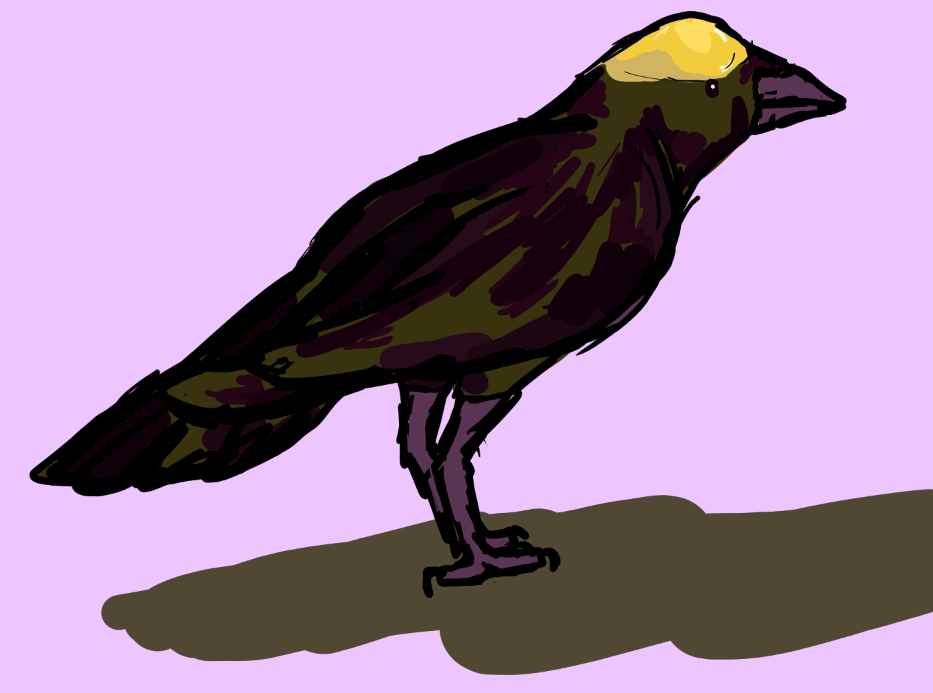
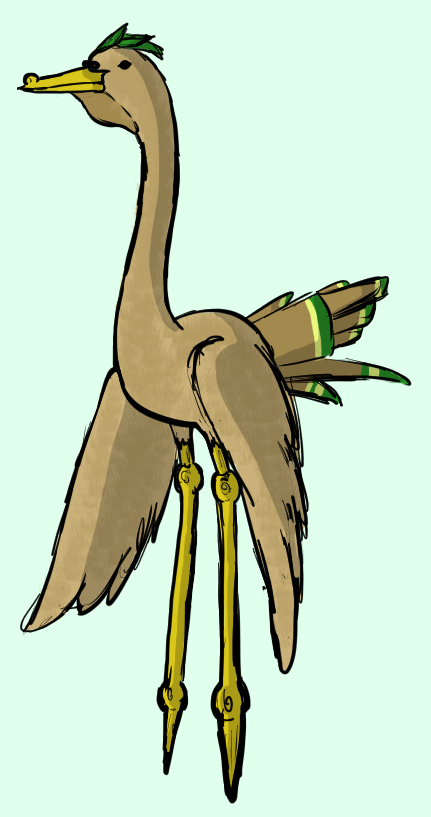
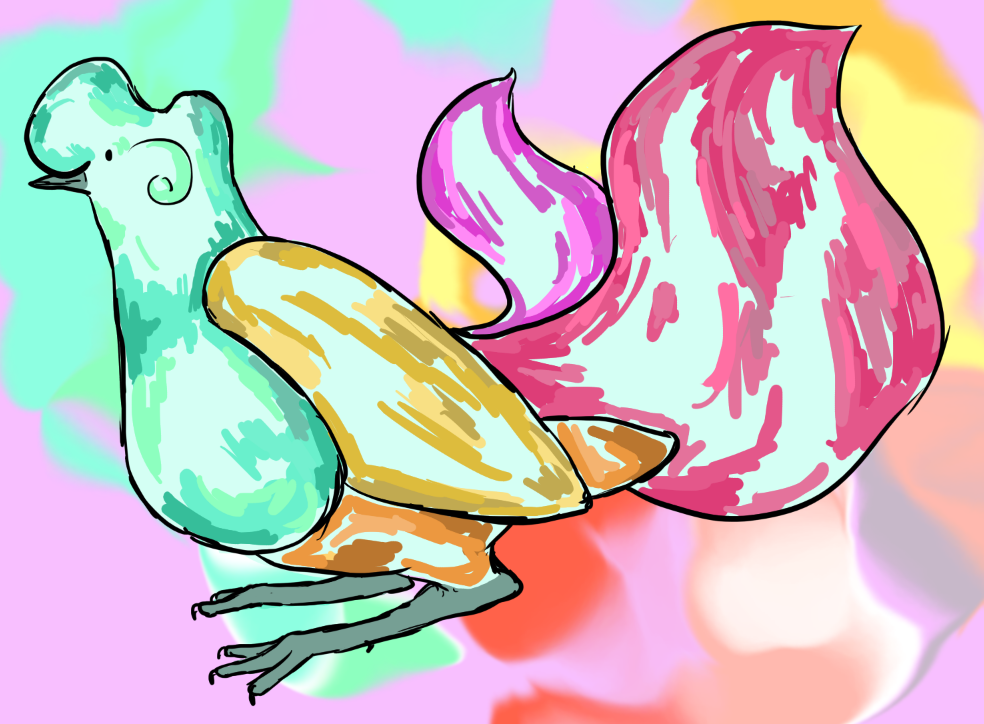
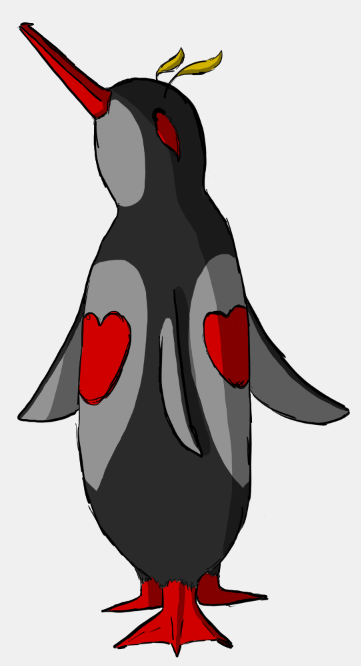
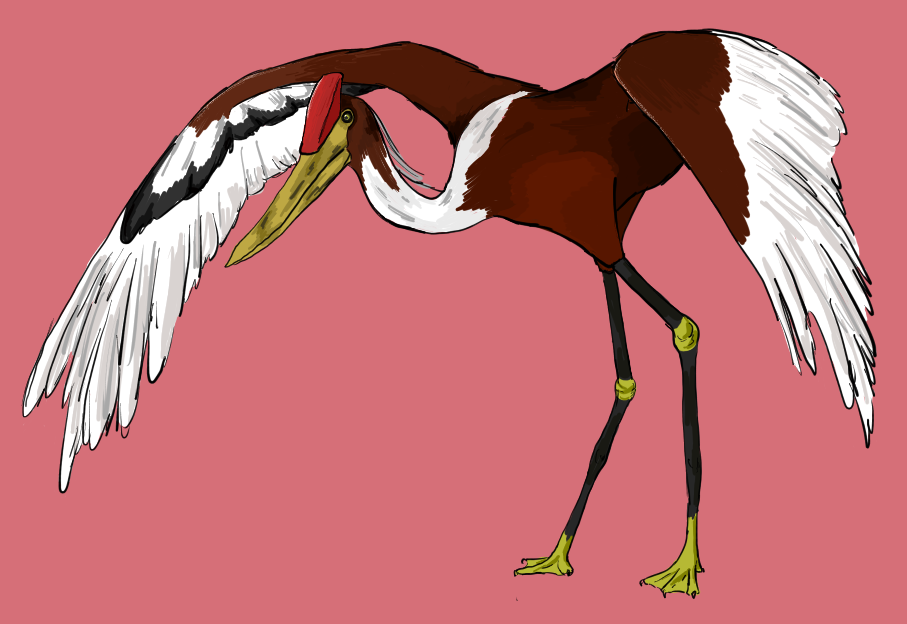
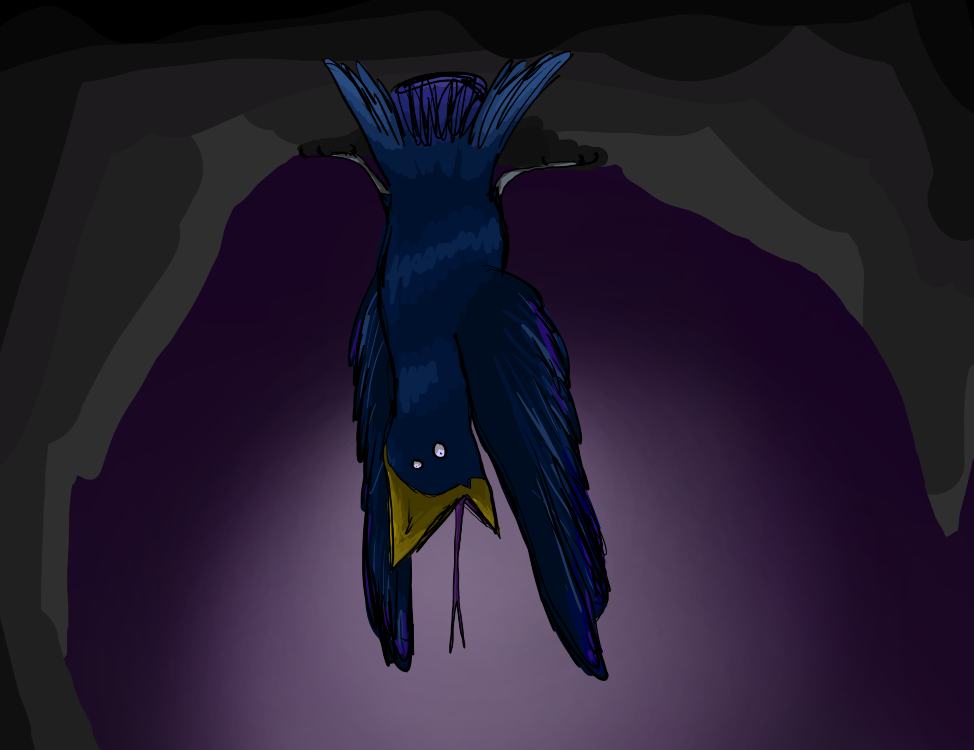



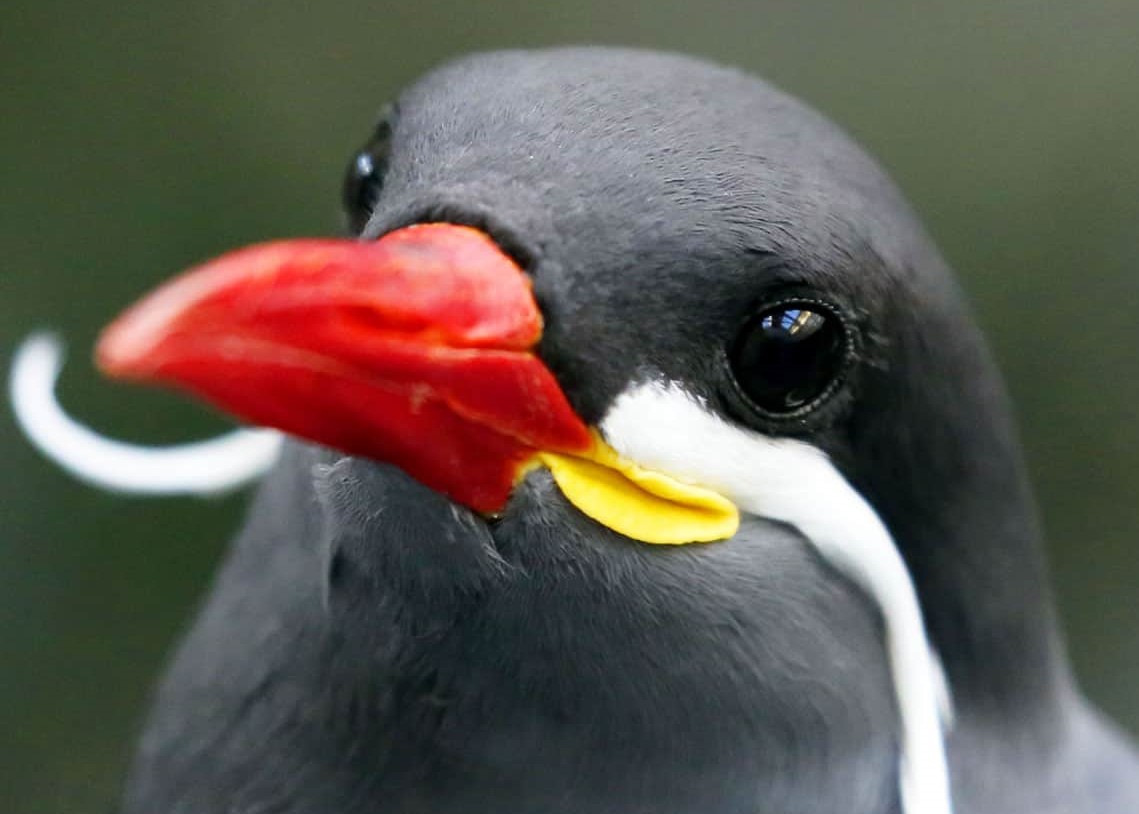

LYREBIRDS! yes, i might be a bit biased having lyrebirds in my own world, but still it is always nice to see them and crows featured in "birds are terrifying in so many cool ways." Wonderful work Mochi. A great addition to A to Zoo
Thank you so much! Lyrebirds are so cool :O